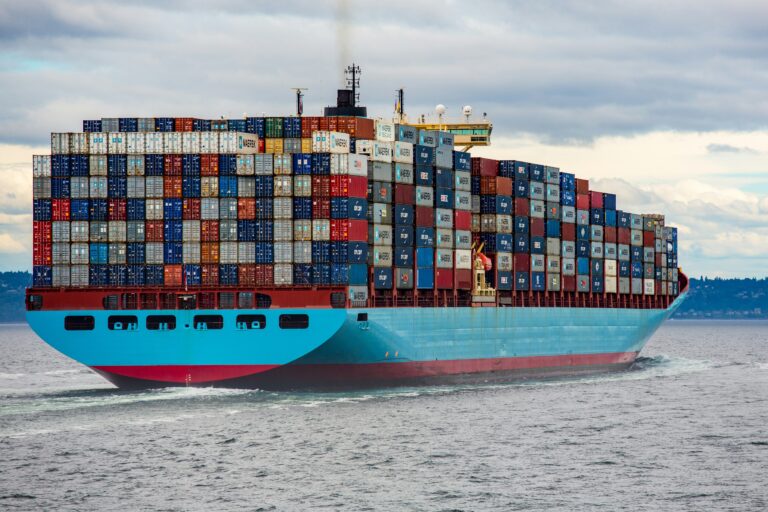
Tariffs and Their Implications
The first quarter of 2025 was a volatile period for U.S. financial markets as investors came to grips with the new administration’s economic policies, principally the Trump tariffs. The S&P 500 returned -4.27%, while the Russell 2000, a leading index of smaller U.S. companies, declined by 9.48%.
The Trump administration has proposed significant tariff increases as a mechanism to encourage domestic manufacturing and reduce the federal budget deficit. The U.S. trade deficit, which has grown steadily for decades, is nearing $1.7 trillion. Similarly, the fiscal deficit—the gap between government revenues and expenditures—has reached approximately $1.6 trillion. The administration plans to pair estimated tariff revenues of $600 billion with $1 trillion in spending cuts to balance the budget, while maintaining the tax cuts from the administration’s first term.
Post-World War II economic growth has been largely driven by globalization and the principle of comparative advantage—the idea that all countries benefit when each focuses on what it does best and engages in open trade. A simple example illustrates this:
Country A has a geothermal resource that provides clean, low-cost energy. Country B has high-quality aluminum ore but lacks processing capacity. It makes economic sense for Country A to build a smelter and import ore from Country B. Both nations benefit from growth in their respective industries, and global markets gain access to affordable, high-quality aluminum. However, Country C—home to an aging, inefficient aluminum mill—responds by imposing tariffs on imports to protect its domestic industry.
While this example is simplified, it reflects the tensions underlying current trade policy debates. For Country C, tariffs lead to higher costs for aluminum, a material used in everything from beverage cans to cars to buildings. Domestic companies pass those costs onto consumers, fueling inflation, weakening currency value, and pushing interest rates higher. Consumers, facing reduced purchasing power, must cut back spending, which dampens GDP growth.
Moreover, tariffs may harm the industries they’re intended to protect. Insulated from competition, such industries have little incentive to modernize. Capital markets are unlikely to invest in businesses that lack a viable long-term advantage. Ultimately, policies intended to help can inadvertently hinder broader economic health.
While free trade has powered global growth for over 75 years, it hasn’t always been fair. Many countries have erected trade barriers to shield their industries. The World Trade Organization exists to help mediate disputes, but it has struggled to resolve long-standing imbalances. The result: countries like the U.S. run persistent deficits, while others, like China, accumulate substantial surpluses.
The U.S. trade deficit is a headwind for growth, especially where imports displace what could be produced domestically. Yet not all imports represent lost opportunities. Consider New England, once a global hub for shoe manufacturing. Most of those jobs have moved overseas. Should tariffs bring them back? Does the U.S. have a competitive advantage in shoe production?
Conversely, New England has developed a globally respected life sciences industry, fueled by its world-class universities and federally supported research. Should government policy prioritize revitalizing old industries at the expense of cutting-edge ones?
Tariffs can be an effective tool in negotiating fair trade, but only if deployed strategically. The current proposals offer limited near-term benefits for U.S. businesses. Many U.S. companies have no domestic alternatives to turn to and must absorb the higher costs or pass them on to consumers. Even if tariffs eventually succeed in reshoring manufacturing, it will take years to rebuild the necessary infrastructure, time many companies may not have.
At the national level, these policies could mean higher inflation, rising interest rates, and slower economic growth. Markets are already reacting to this risk.
That said, there is potential for a brighter outcome. If tariff negotiations lead to fairer trade and a smaller deficit, the long-term benefits could be meaningful. The U.S. economy remains fundamentally strong and highly adaptable. Investors would do well not to become overly pessimistic in the short term.
The companies we invest in on your behalf are high-quality businesses—Ironwood High I-Q companies. These companies have the resources to weather disruption and seize opportunities that emerge during turbulent periods. We have confidence that their stock prices will recover in time. Over the past 25+ years, we’ve seen many market downturns, and each one has provided us the chance to invest in great businesses at attractive prices. We aim to do the same again.
Sincerely,
